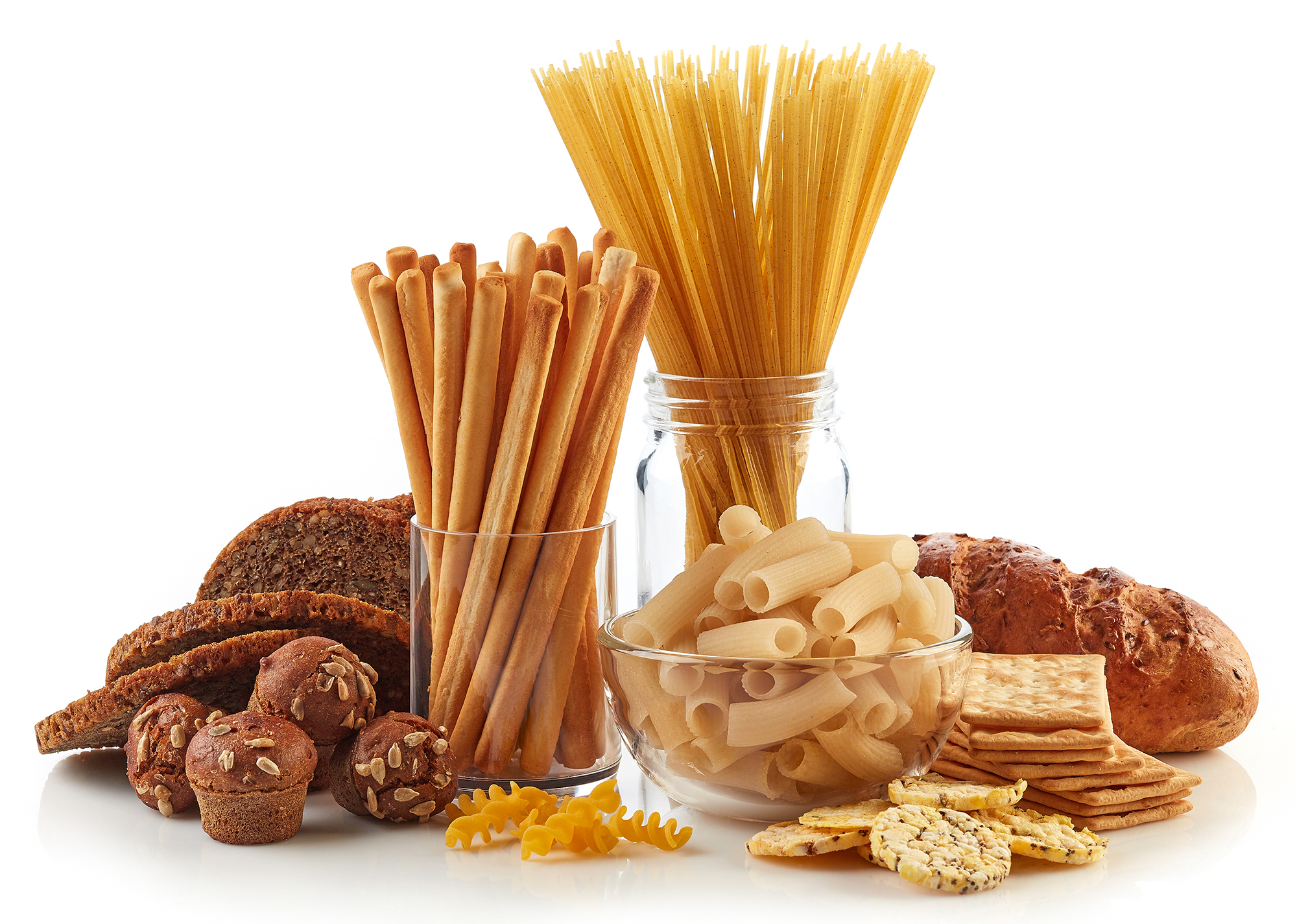All About Gluten
Health | December 25, 2019
Going gluten-free isn’t exactly a new trend. The earliest mention of gluten intolerances goes back to 250 AD in Greece, when patients were referred to as “koiliakos” (based on the Greek word “koelia” for abdomen). In the 1940s, the original “gluten-free” diet was formed by pediatrician Dr. Willem-Karel Dicke based on his discovery of celiac disease, an autoimmune disorder that’s triggered by gluten. It wasn’t until the early 2000s when the media made gluten public enemy #1. But the question remains-should we be going gluten-free? Is gluten as bad as people say? Or is there something more to the story here? Let’s find out as we explore the pros and cons of going gluten-free. [1] [2]
Gluten 101
You know the drill. Let’s start with a little 101, so you know what gluten is (and not sound like those people on Jimmy Kimmel). Here’s the scoop. Gluten is a protein found in certain types of grains, including:
- Wheat
- Wheatberries, durum, emmer, semolina, spelt, farina, farro, graham, kamut, einkorn
- Barley
- Rye
- Couscous
- Farina
- Triticale (which is a cross between wheat and rye)
There are two types of gluten- gliadin, and glutenin. Thanks to these guys bread can “rise” and have a “doughy” texture. Gliadin contains epitopes, which is what our immune system recognizes. These include alpha-gliadin, beta-gliadin, gamma-gliadin, and omega-gliadin. Here’s what happens when you eat gluten.
First, a class of digestive enzymes known as tissue transglutaminase (tTG) work to break down the gluten. This breakdown produces the proteins deamidated gliadin and glutemorphins. These byproducts are what triggers the negative reactions found in Celiac disease (although the body can still react to gluten). However, it should be noted that there are other types of gluten. Rye contains secalin, and barley contains hordein. Both contain a protein called fraction gliadin.
Why does any of this matter? Because no two people respond to the same type of gluten. You could be okay with rye but extremely sensitive to barley. Celiacs tend to have the most problems with gliadins. For them, gliadin can’t be properly broken down during digestion, which is why it causes an immune response and damage to the intestines. And it doesn’t take a lot. All you need is about 50 milligrams (the size of a small crouton). People with celiac are at risk for osteoporosis, infertility, nerve damage, anemia, seizures, and malnutrition because of the damage to the intestinal tract. [2] [3] [4] [5]
Sources of Gluten
Gluten is found in many foods, often hiding in plain sight. These include:
- Barley malt, syrup, flavoring, flour, extract, milk, and vinegar
- Pumpernickel bread
- Brewer’s Yeast
- Wheat starch
- Pasta (all types)
- Noodles
- Bread
- Pastries and baked goods (cookies, pie, pita, bagels, flatbreads, cornbread, muffins, donuts, brownies, cakes, croissants, rolls, naan, potato bread, etc.)
- Tortillas
- Croutons
- Stuffing
- Cereal
- Pizza crust
- Granola
- Panko
- Breaded meat
- Crackers, pretzels
- Beer (unless certified gluten-free) and malt beverages
- Sauces and gravies (wheat flour is often used as a thickener)
- Energy bars
- Candy
- Processed cheese (check the ingredients list)
- Licorice
- “Multigrain” chips and bread
- Artificial flavors
- Cheesecake filling
- Seasonings (check the ingredients list)
- Starch or dextrin
- Brown rice syrup (often made with barley enzymes)
- Soy sauce (unless Tamari)
- Pre-seasoned meat
- Takeout omelets and scrambled eggs (may places use pancake batter to fluff up their food)
- Meat substitutes, like seitan (imitation crab, bacon, sausage, seafood, burgers, etc.)
- Soup (wheat flour can be used as a thickener)
- French fries (may be cross-contaminated from the fryers or battered with wheat flour)
Whew! That’s quite a lot! Oh, let’s talk about oats. The short answer is, yes, they are gluten-free. The long answer is that unless the label states 100% pure, non-contaminated, made in a gluten-free facility oats, then they’re not safe to eat IF you have a wheat or gluten intolerance. Most oats today are made in facilities that handle wheat, barley, and rye, so cross-contamination is likely!
Are there any gluten-free grains? Yes, there are! These include rice, buckwheat or kasha (which is a seed, not a grain), quinoa, millet, amaranth, sorghum, and tapioca. [3] [6] [7] [8]
Who Should (and Should Not) Go Gluten Free?
It turns out that we’d all probably be better off without gluten. According to the world’s leading expert on gluten, Dr. Alessio Fasano of Harvard, anyone who eats gluten is doing small amounts of damage to their intestinal lining, creating leaky gut and inflammation. [10]
Gluten is somewhat tolerable If…
- The rest of your diet is based on whole foods like meat, veggies, fruit, nuts and seeds, and minimally processed foods; you do not consume processed, “gluten-free” products
- You do not have Celiac disease, IBD (inflammatory bowel disease), IBS (irritable bowel syndrome), dysbiosis (bacterial imbalance), SIBO (small intestinal bacterial overgrowth), autoimmune disease, or just a simple frequent bloating and gastro intestinal discomfort.
- Your diet is vegan or vegetarian (gluten-containing grains provide plenty of nutrients, with products like seitan providing extra protein)
- You do not follow a low or very low carb diet (i.e., keto)
Avoid Gluten If You…
- Are part of the 1% of the population diagnosed with celiac [9]
- Have digestive-related diseases or disorders
- Are diagnosed with an autoimmune disorder
- Eat a grain-free diet (i.e., paleo)
- Follow a low carb or very low carb diet (i.e., keto)
- Need to control blood sugar/insulin (gluten-containing foods tend to spike them)
I rarely eat gluten or grains these days, but I’ve included foods like oatmeal in some of my meal plans (including my new Bikini Body Meal Plan) and recipes (such as couscous and whole wheat). Bottom line is, it’s ok to enjoy gluten containing foods every once in a while, however even if you’re not celiac, gluten isn’t something you should eat regularly.
Sources:
[1] https://celiact.com/blogs/the-celiact-blog/a-brief-history-of-the-gluten-free-diet-where-do-we-stand
[2] https://www.mayoclinic.org/diseases-conditions/celiac-disease/symptoms-causes/syc-20352220
[3] https://www.medicalnewstoday.com/articles/318606.php
[4] https://celiac.org/gluten-free-living/what-is-gluten/sources-of-gluten/
[5] https://www.health.harvard.edu/blog/going-gluten-free-just-because-heres-what-you-need-to-know-201302205916
[6] https://www.schaer.com/en-us/a/what-gluten
[7] https://celiac.org/about-the-foundation/featured-news/2014/12/oats-and-gfd/
[8] https://www.verywellfit.com/gluten-free-grains-to-try-562842
[9] https://www.cureceliacdisease.org/wp-content/uploads/341_CDCFactSheets8_FactsFigures.pdf
[10] https://shows.pippa.io/the-doctors-farmacy/episodes/should-we-all-avoid-gluten-with-dr-alessio-fasano
















Comments Add Comment
Add a Comment